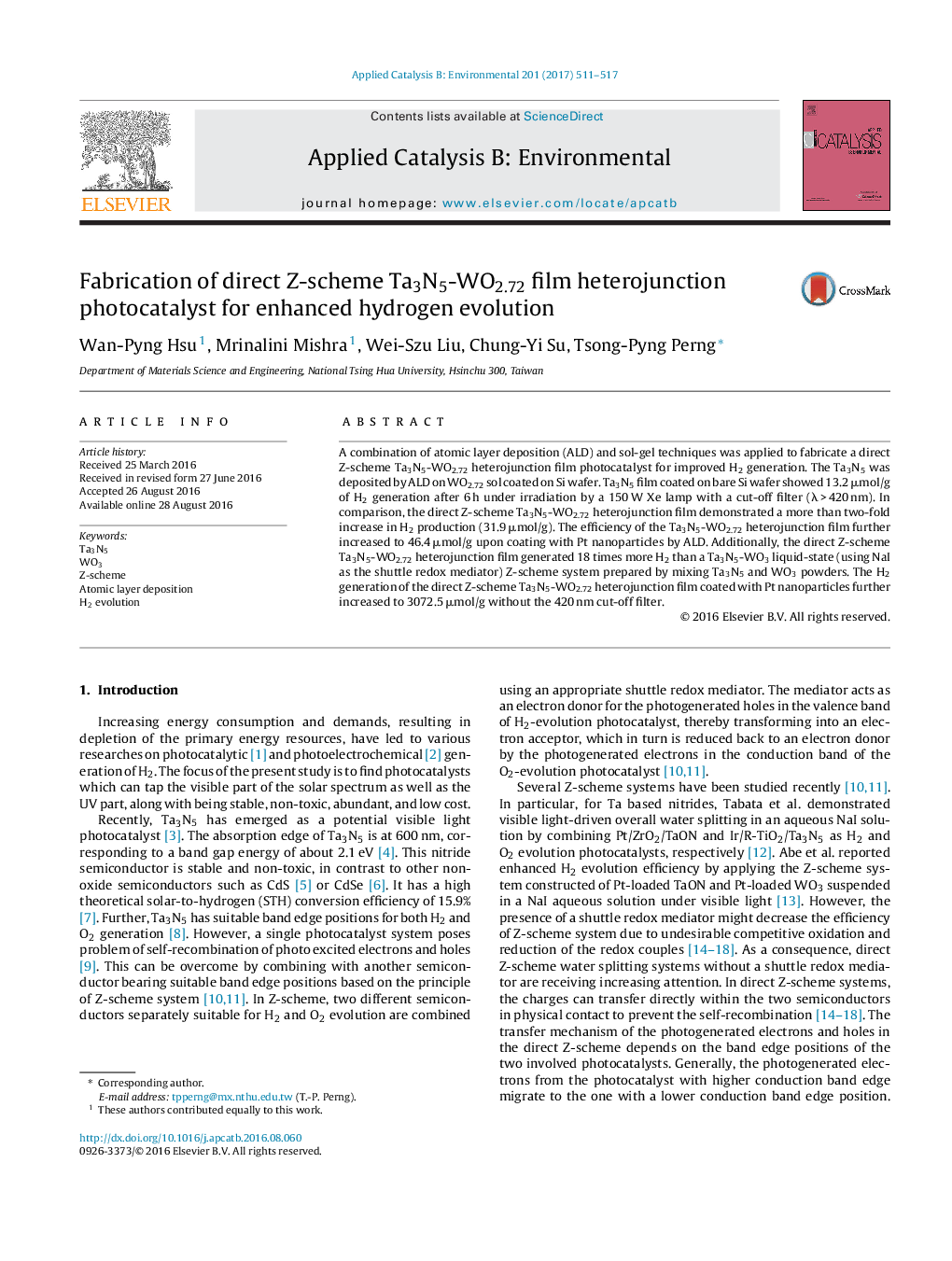| Article ID | Journal | Published Year | Pages | File Type |
|---|---|---|---|---|
| 6455055 | Applied Catalysis B: Environmental | 2017 | 7 Pages |
â¢Ta3N5-WO2.72 film was prepared via sol-gel and ALD followed by RTA as a direct Z-scheme photocatalyst.â¢Enhanced visible light H2 evolution was observed even without co-catalyst.â¢Direct Z-scheme (film) performed better than liquid-state Z-scheme (powders) for Ta3N5-WO2.72 (WO3) system.â¢Conformal Ta3N5 film formed by ALD confirmed good physical contact, hence better electron migration.â¢Mechanism of electron-hole recombination in Ta3N5-WO2.72 (WO3) system is proposed.
A combination of atomic layer deposition (ALD) and sol-gel techniques was applied to fabricate a direct Z-scheme Ta3N5-WO2.72 heterojunction film photocatalyst for improved H2 generation. The Ta3N5 was deposited by ALD on WO2.72 sol coated on Si wafer. Ta3N5 film coated on bare Si wafer showed 13.2 μmol/g of H2 generation after 6 h under irradiation by a 150 W Xe lamp with a cut-off filter (λ > 420 nm). In comparison, the direct Z-scheme Ta3N5-WO2.72 heterojunction film demonstrated a more than two-fold increase in H2 production (31.9 μmol/g). The efficiency of the Ta3N5-WO2.72 heterojunction film further increased to 46.4 μmol/g upon coating with Pt nanoparticles by ALD. Additionally, the direct Z-scheme Ta3N5-WO2.72 heterojunction film generated 18 times more H2 than a Ta3N5-WO3 liquid-state (using NaI as the shuttle redox mediator) Z-scheme system prepared by mixing Ta3N5 and WO3 powders. The H2 generation of the direct Z-scheme Ta3N5-WO2.72 heterojunction film coated with Pt nanoparticles further increased to 3072.5 μmol/g without the 420 nm cut-off filter.
Graphical abstractDownload high-res image (160KB)Download full-size image
